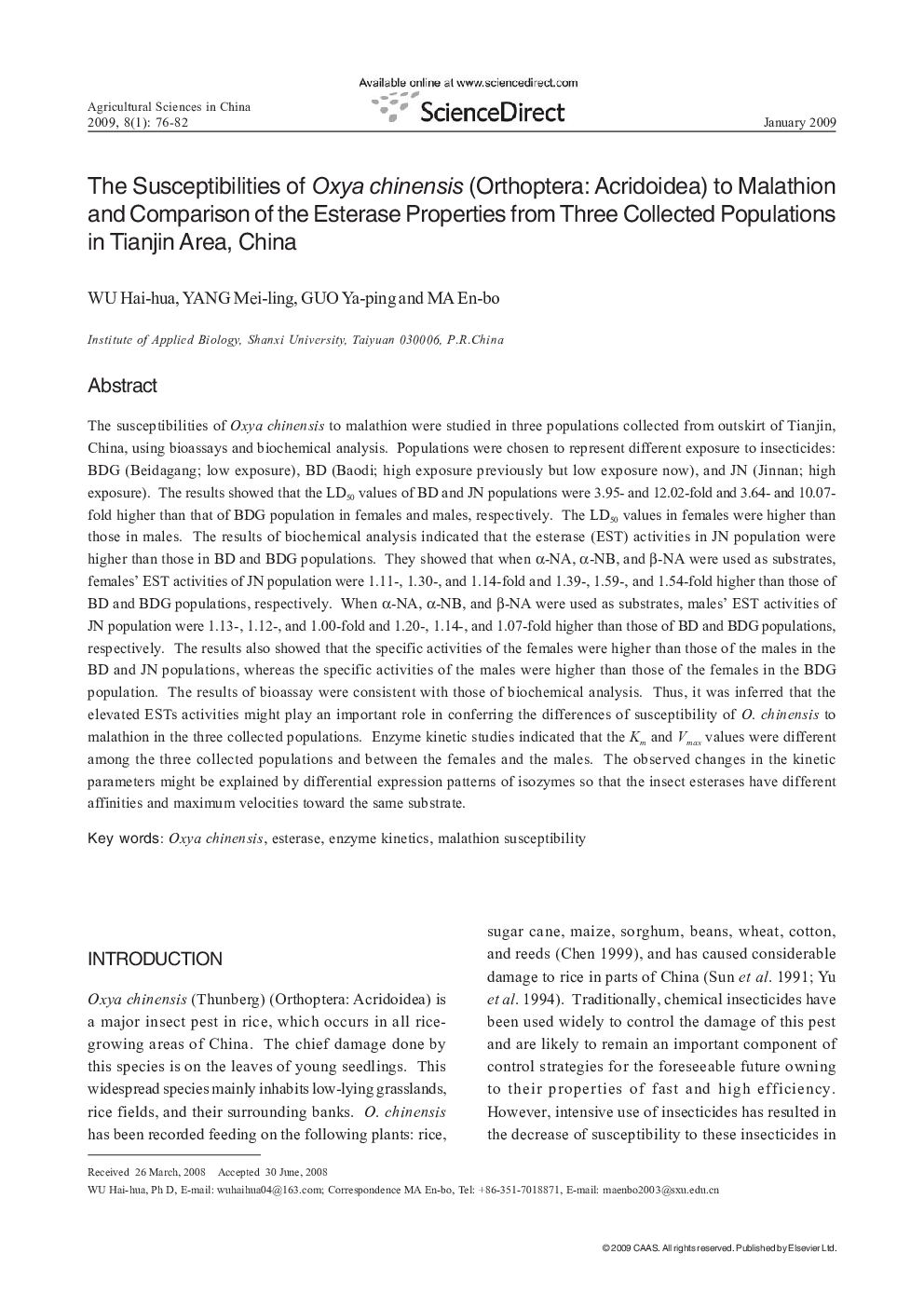| Article ID | Journal | Published Year | Pages | File Type |
|---|---|---|---|---|
| 4490489 | Agricultural Sciences in China | 2009 | 7 Pages |
The susceptibilities of Oxya chinensis to malathion were studied in three populations collected from outskirt of Tianjin, China, using bioassays and biochemical analysis. Populations were chosen to represent different exposure to insecticides: BDG (Beidagang; low exposure), BD (Baodi; high exposure previously but low exposure now), and JN (Jinnan; high exposure). The results showed that the LD50 values of BD and JN populations were 3.95- and 12.02-fold and 3.64- and 10.07- fold higher than that of BDG population in females and males, respectively. The LD50 values in females were higher than those in males. The results of biochemical analysis indicated that the esterase (EST) activities in JN population were higher than those in BD and BDG populations. They showed that when α-NA, α-NB, and β-NA were used as substrates, females' EST activities of JN population were 1.11-, 1.30-, and 1.14-fold and 1.39-, 1.59-, and 1.54-fold higher than those of BD and BDG populations, respectively. When α-NA, α-NB, and β-NA were used as substrates, males' EST activities of JN population were 1.13-, 1.12-, and 1.00-fold and 1.20-, 1.14-, and 1.07-fold higher than those of BD and BDG populations, respectively. The results also showed that the specific activities of the females were higher than those of the males in the BD and JN populations, whereas the specific activities of the males were higher than those of the females in the BDG population. The results of bioassay were consistent with those of biochemical analysis. Thus, it was inferred that the elevated ESTs activities might play an important role in conferring the differences of susceptibility of O. chinensis to malathion in the three collected populations. Enzyme kinetic studies indicated that the Km and Vmax values were different among the three collected populations and between the females and the males. The observed changes in the kinetic parameters might be explained by differential expression patterns of isozymes so that the insect esterases have different affinities and maximum velocities toward the same substrate.
